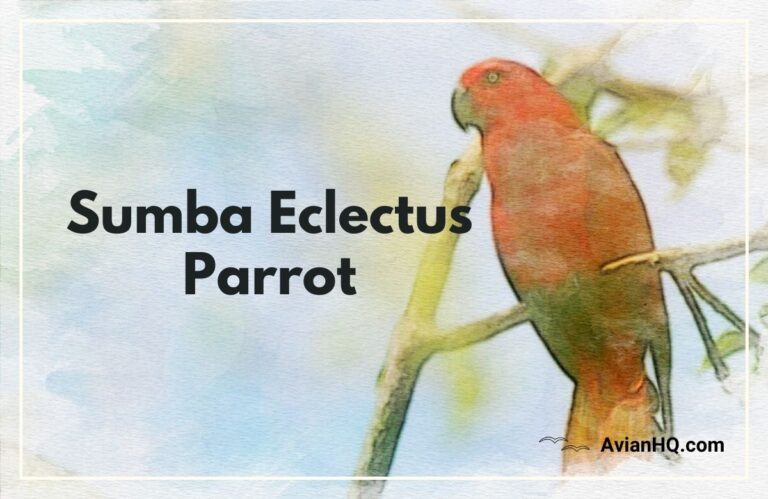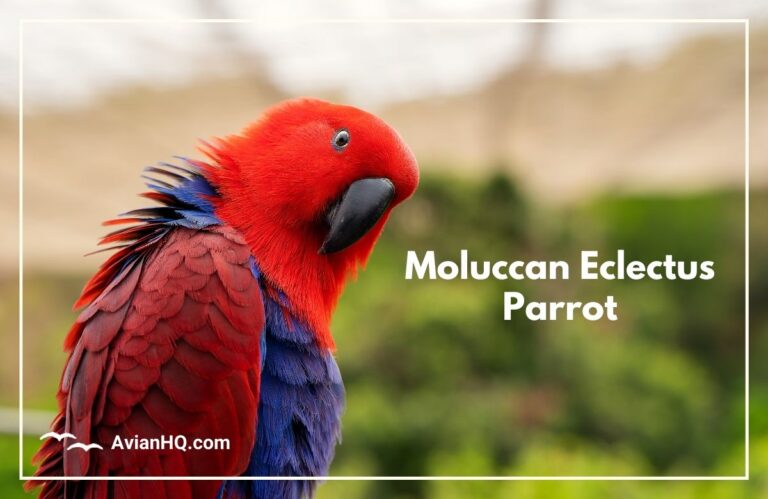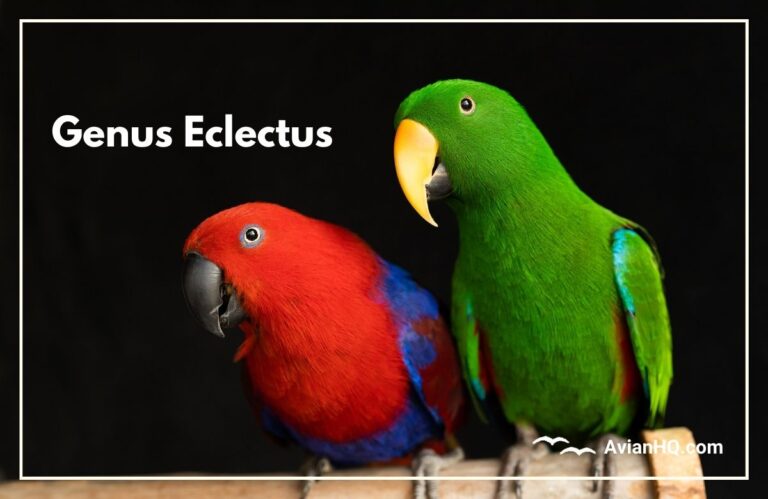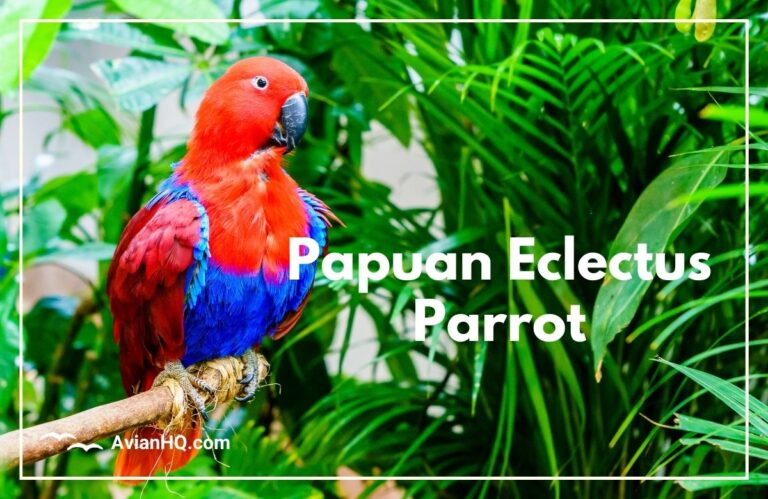Oceanic Eclectus Parrot (Eclectus infectus)
Have you ever heard of the Oceanic Eclectus Parrot? This extinct and elusive bird once called the Pacific islands of Tonga, Vanuatu, and possibly Fiji home. But human activity led to the demise of this unique island species thousands of years ago.
Though gone, the Oceanic Eclectus Parrot remains fascinating. it’s bones provide clues to untangling the evolutionary past of it’s famous relative, the Eclectus Parrot. Uncovering the natural history of this species also reveals insights into vanished Pacific ecosystems. Join us on an exploratory journey to learn more about this extinct parrot of the islands.
We’ll cover the discovery and naming of the Oceanic Eclectus Parrot. Visualizing it’s appearance and habits takes some forensic work, but educated guesses are possible. The role of humans in it’s extinction gives us pause. Ultimately, the legacy of this bird endures as a symbol of fragile island life. Much remains unknown, but science continues to illuminate the mysteries of this extinct species.
History and Taxonomy
The Oceanic Eclectus Parrot remained unknown to science until relatively recently. In November 1989, fossil bones were unearthed on the islands of Tonga, Vanuatu, and Fiji by an expedition led by ornithologist David William Steadman. Radiocarbon dating revealed these bones to be 3,000-4,000 years old, originating in the Late Pleistocene to Holocene epochs.
The fossils consisted of over a dozen individual bones, including a complete femur, five radii, a quadrate, a mandible, two humeri, two ulnae, and assorted wing, leg, and foot bones. Analysis determined these remains represented a new extinct parrot species.
In 2006, Steadman formally described and named the species Eclectus infectus. The genus name Eclectus means “chosen” in Greek, referring to this parrot’s distinctive plumage. The species name infectus derives from Latin meaning “dyed” or “colored.”
Eclectus infectus belonged to the parrot family Psittaculidae, joining the Eclectus Parrot (Eclectus roratus) as it’s sole close living relative. Both species likely descended from a common ancestor in Australia or the Solomon Islands that reached the Pacific islands.
No subspecies of E. infectus have been defined. it’s range spanned at least 300 miles across Oceania, encompassing the island groups of Tonga (171 mi2), Vanuatu (4,706 mi2), and possibly Fiji (7,056 mi2).
Physical Appearance
Reconstructing the physical appearance of the Oceanic Eclectus Parrot poses challenges, as no complete specimens exist. However, insights can be drawn from it’s fossil remains, living relatives, and island habitat.
The Oceanic Eclectus likely measured around 33-39 cm (13-15 in) long and weighed 130-160 g (4.6-5.6 oz), similar to other medium-sized parrots. Analysis of wing bones showed proportionally smaller wings compared to the Eclectus Parrot. This adaptation enabled maneuverability when flying through dense island vegetation.
Vibrant plumage was the hallmark of this species, as in other eclectus parrots. The males likely exhibited brilliant emerald, crimson, and royal blue feathers. Females presumably had contrasting ruby, violet, and deep green colors. The tail and wings probably showed colorful banding patterns. Note: the colors listed here are speculative as the actual colors are unknown.
The bill shape allowed consuming a variety of foods, from fruits to seeds and nuts. Strong feet and curved talons enabled climbing. Large eyes with keen vision helped navigate the forests.
Habitat and Distribution
The Oceanic Eclectus Parrot was endemic to several Pacific island groups when first colonized by humans around 3,000 years ago. it’s bones have been found on Tonga, Vanuatu, and possibly Fiji.
These island nations have tropical climates ideal for parrots. Tonga averages temperatures of 23-31°C (73-88°F) and receives about 2,000 mm (79 inches) of rainfall annually. Vanuatu is similarly warm and wet.
The habitat consisted primarily of tropical and subtropical moist broadleaf forests. Dense vegetation including palms, banyans, and fig trees likely provided an abundance of food as well as nesting cavities.
Elevations on most of Tonga, Vanuatu, and Fiji range from sea level up to around 650 m (2,130 ft). The parrots inhabited low to middle elevations within this range.
The only place the Oceanic Eclectus Parrot was found was within it’s island group homes in the South Pacific. it’s extinction meant a loss of both genetic diversity and uniqueness in parrot evolution.
Diet and Feeding
Like most parrots, the Oceanic Eclectus likely consumed a wide variety of plant foods. Their forest habitat provided numerous options.
Fruits with soft pulp rich in sugars, such as figs, mangoes, and palms were probable staples. Hard nuts and seeds also offered nutrition and could be cracked open by their strong beaks.
Flowers, nectar, leaf buds, fungi, and even small insects may have supplemented the diet. Having a varied diet helped ensure adequate nutrition.
The parrots likely fed on different foods depending on availability and ripeness. Plentiful fruits during wet seasons sustained them, while nuts and seeds balanced the diet in drier months.
Feeding probably occurred in the high canopy while perched or climbing using the beak and feet. Flocks may have foraged together, calling to each other across the treetops. Strong jaws enabled cracking hard nuts and seeds.
Like modern Eclectus Parrots, these adaptable feeders likely moved between food sources in their habitat as needed. Their diverse diet supported an active lifestyle.
Breeding and Reproduction
Little directly evidence exists regarding the breeding behaviors of the Oceanic Eclectus Parrot. However, some reasonable conjectures can be made based on related species.
Nesting likely took place in the hollows of tall rainforest trees. The birds may have competed with other cavity nesters for ideal sites. Clutch size was probably 2-4 eggs.
Incubation duties were likely shared by both parents. The incubation period was likely 3-4 weeks, as in other parrots. Chicks hatched helpless but grew quickly, fledging in 6-8 weeks.
Young parrots required parental care for an extended period as they learned to forage. The bright adult plumage probably took 1-2 years to fully emerge after maturing.
Breeding was timed to coincide with seasonal food abundance. In the tropical climate, nesting could occur year-round if food sources permitted. The pair bond was strong and lifelong.
While the details are unclear, the Oceanic Eclectus certainly shared the productive breeding capabilities typical of parrots that allowed it to thrive before human interference.
Behavior and Ecology
The Oceanic Eclectus Parrot exhibited behaviors familiar among parrot species, adapted to it’s island habitat.
It was highly social, dwelling in flocks of 10-30 birds for signaling danger, finding food, and socialization. Pairs or families within the flock also bonded strongly.
Roosting occurred in treetop canopies, with groups gathering at dusk in traditional sites. Their bright plumage stood out even while at rest.
Foraging took place during the day as the parrots moved through the upper forest layers searching for ripe fruits, nuts, seeds, and other foods. Their strong flight enabled covering large areas.
Interactions with other species were likely common. Competition for nest sites and food sources probably occurred with other island birds. Predators such as hawks pose a threat to fledglings.
Similar to other parrots, socalizations played an important role in communication and social cohesion. These parrots likely had a repertoire of squawks, chirps, and whistles. Mimicry of other species was also possible.
Extinction
The arrival of humans in Oceania proved catastrophic for the endemic Oceanic Eclectus Parrot. Fossil evidence shows the species disappeared abruptly around 3,000 years ago.
Early human colonization of Tonga, Vanuatu, Fiji and other Pacific islands caused widespread habitat loss as forests were cleared for agriculture. Nesting and feeding sites diminished.
Hunting by humans also placed unsustainable pressure on populations. The parrots’ bright plumage and curiosity made them easy targets.
Non-native species introduced by colonists were another factor. Rats, cats, and monkeys predated eggs and competed with the parrots. Diseases took a toll.
With it’s low reproductive rate, the Oceanic Eclectus was unable to withstand these sudden threats. The last surviving populations vanished within several generations.
Sadly, humans likely caused the premature extinction of this unique island parrot.
While extinction is final, the memory and insights from the Oceanic Eclectus Parrot live on to inspire future conservation.
Conservation Status
The Oceanic Eclectus Parrot has been classified as Extinct by the International Union for Conservation of Nature (IUCN) Red List since 2008. This means there is no reasonable doubt the last individual has died.
At the time of extinction around 3,000 years ago, the global population was likely in the tens of thousands, distributed across suitable habitat on Tonga, Vanuatu, and possibly Fiji. But no living individuals or populations are known to exist presently.
As an extinct species, there are no specific conservation actions in place. However, protecting the last remnant forests in it’s former range aids other endemic wildlife. Fossils also reveal important ecological insights that can guide modern conservation.
While humans caused it’s extinction centuries ago, today we have a greater understanding of environmental stewardship. Learning from the loss of the Oceanic Eclectus Parrot reminds us of our responsibility to protect species diversity wherever it still remains.
Though gone, this parrot’s tropical island habitats remain ecologically important and worthy of our care.
Significance and Legacy
What is the lasting importance of the extinct Oceanic Eclectus Parrot? This species represents a unique evolutionary lineage and highlights the fragility of island ecosystems.
As the only extinct member of the genus Eclectus, the Oceanic Parrot embodied a divergence from it’s Australian relatives. it’s adaptation to Pacific islands yielded smaller wings well-suited to navigating dense forests.
The demise of this parrot underscores how the introduction of humans and invasive species to remote islands can critically disrupt endemic wildlife. it’s extinction was part of the larger holocene extinction process.
Beyond ecology, the Oceanic Eclectus holds cultural significance. It possibly may have inspired indigenous art and stories before written records began. Some evidence hints it survived long enough to be documented by early European explorers.
While we will never fully know this extinct bird, it provides lessons that live on. Perhaps most poignantly, it teaches us to carefully steward fragile island ecosystems that sustain unique species.
Conclusion
The story of the Oceanic Eclectus Parrot has tragic elements but also sparks awe and wonder. This forgotten Pacific island bird was a brilliant gem of evolution. Reconstructing a glimpse into it’s life and loss allows us to marvel at the diversity of parrots while reflecting on the impacts humans can have on the natural world. Even extinction cannot erase the lessons and meaning derived from this rare species. Perhaps in the future, more fossils will further unveil the mysteries of this parrot. For now, the journey of discovery continues, paying tribute to a vivid echo of tongues that can no longer call from the forests of Oceania.






